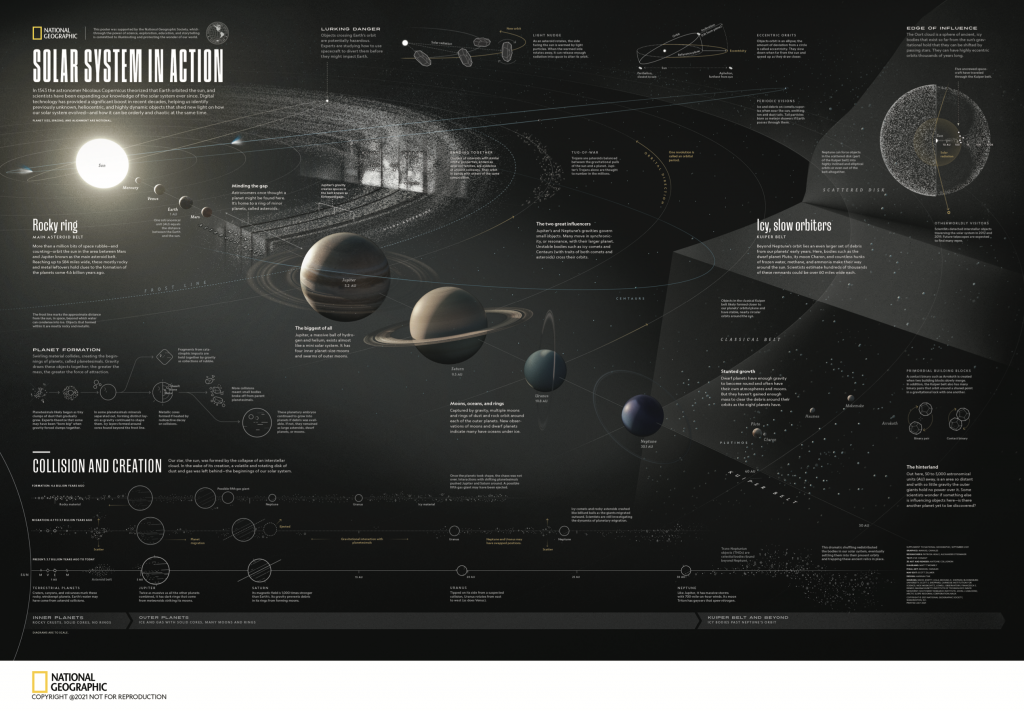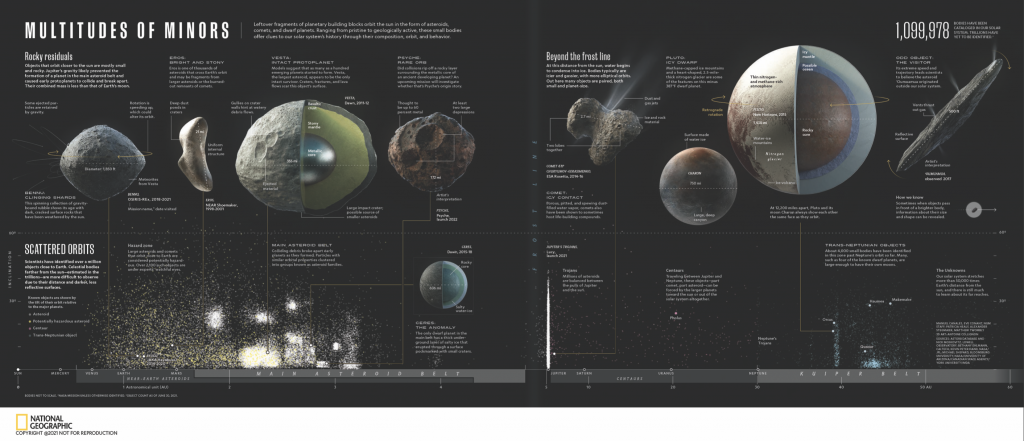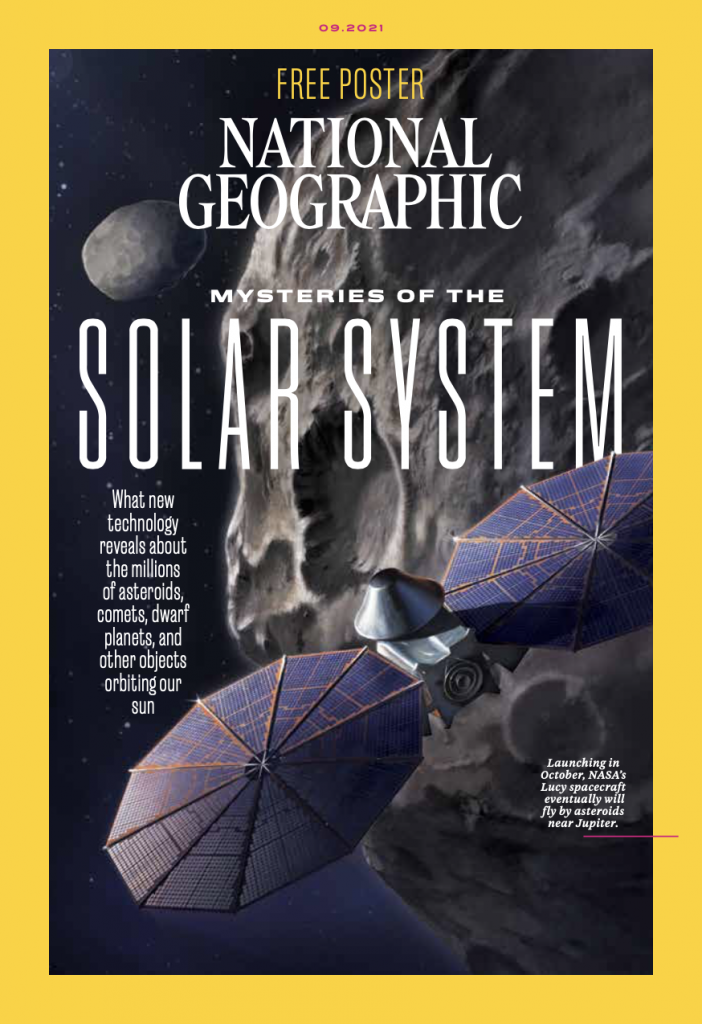THE INTERACTIVE IS THE FIRST UPDATED MAP OF THE SOLAR SYSTEM AND SUN IN NEARLY 40 YEARS, ALLOWING NAT GEO TO EXPAND THE VIEW OF SPACE TO ALL
The digital experience is part of a larger package on the solar system being published online at natgeo.com/space and featured in the September issue of the magazine
EXCLUSIVE PHOTOS, MAPS, AND ANIMATED GRAPHICS AVAILABLE


WASHINGTON, DC (Sept. 14. 2021) — In a year where National Geographic has reimagined what dinosaurs looked like and identified a fifth ocean, the brand is now turning its attention to space and redefining what we thought we knew about asteroids, dwarf planets and more, making it accessible to everyone in the process.
Ahead of Space Week in October and the launch of NASA’s Lucy Mission later this year (which will explore a set of asteroids near Jupiter), the September issue cover story of National Geographic remaps the solar system as we know it today. It’s estimated that about 90% of the million or so known solar system objects have been found since 2000! In the next decade or so, scientists could find at least another 5 million more. Ever since the 2006 reclassification of Pluto as a “dwarf planet,” scientists have uncovered a far larger and livelier solar system than most people learned about in school. In the cover feature, The ‘small wonders’ unlocking secrets of the solar system, by author Michael Greshko, the flood of new research on our solar system’s small bodies and the remarkable efforts to find and visit them are surveyed, an effort that is fundamentally remapping our cosmic home.
In addition to the cover feature, the issue includes National Geographic’s updated map of the solar system and sun since 1986, and a brand-new interactive online, which dives into the remapped solar system. The interactive experience is available now at natgeo.com/space.
National Geographic has also released a new podcast episode of “Overheard,” discussing how astronomers are examining pint-sized pieces of the solar system—like asteroids and comets—more closely than ever before. You can find the episode here. Additionally, National Geographic Family has published a “Guide to Fall Stargazing” from “Night Sky Guy”, Andrew Fazekas, with an emphasis on how families can stargaze together. The guide provides tips and star charts that give kids a spectacular night show.
Lastly, educators can join in on the astronomical fun by checking out National Geographic Society’s Resource Library for a curated collection of activities + videos about our solar system. They can own a Giant Map of the Solar System where kids can explore outer space hands-on, or rather “feet-on,” with interactive activities to engage them in geography! The fun continues with a Virtual Field Trip: Solar Systems—a free live event on September 29 at 1:00 p.m. ET—featuring National Geographic Senior Graphic Editor Manuel Canales, researcher Patricia “Patty” Healy, Nat Geo Explorer and astronomer Munazza Alam, and Fall 2020 Nat Geo Young Explorer Ilias Psyroukis. Munazza will also return for an Explorer Classroom on September 30 at 10:00 a.m. and 2:00 p.m. ET to share more about her work on exoplanets—or worlds that exist outside of our Solar System.
To see the full package, visit natgeo.com/space.

*IMAGES/ASSET FOR THE INTERACTIVE ARE HERE*
*IMAGES/ASSETS FOR THE COVER STORY ARE HERE*
Press Contacts:
Anna Kukelhaus: anna.kukelhaus@natgeo.com, 202.258.8020
Caitlin Holbrook: caitlin.holbrook@natgeo.com, 716.225.0502